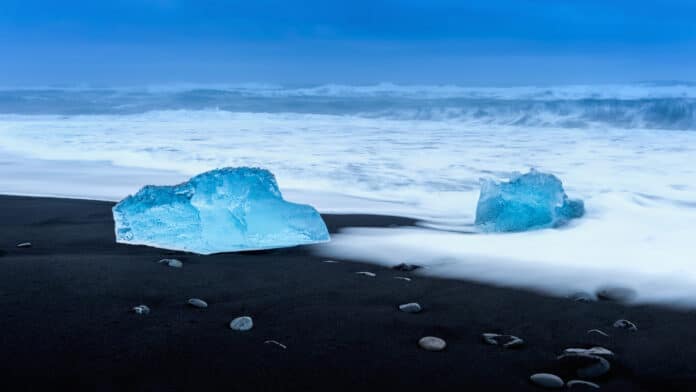
By Ashwini Sakharkar 16 Jul, 2024
Collected at: https://www.techexplorist.com/how-climate-change-altering-earths-rotation-day-length/86189/
Climate change and movements in the Earth’s interior are causing a shift in the Earth’s axis of rotation, leading to polar motion. The melting of polar ice caps and other shifts in mass are triggering this motion.
For the first time, researchers at ETH Zurich have fully explained the various causes of long-term polar motion using AI methods in the most comprehensive modeling to date.
Their model and observations indicate that the influence of climate change and global warming on the Earth’s rotational speed will be greater than the effect of the moon, which has been determining the increase in the length of the day for billions of years.
In a study published in PNAS, researchers from ETH Zurich demonstrate that climate change is causing the length of the day to increase by a few milliseconds from the current 86,400 seconds. This phenomenon is a result of water moving from the poles to lower latitudes, consequently slowing down the Earth’s rotation.
Tidal friction, influenced by the moon, is another factor contributing to this slowdown. However, the new study surprisingly concludes that if human activities continue to release more greenhouse gases, leading to a warming of the Earth, this would ultimately have a more significant impact on the Earth’s rotational speed than the effect of the moon, which has been the determining factor in the lengthening of the day for billions of years.
“We humans have a greater impact on our planet than we realize,” concludes Benedikt Soja, Professor of Space Geodesy at the Department of Civil, Environmental, and Geomatic Engineering at ETH Zurich, “and this naturally places great responsibility on us for the future of our planet.”
The melting ice causes shifts in mass on the Earth’s surface and in its interior, leading to changes in the Earth’s rotational speed, the length of the day, and the axis of rotation, as demonstrated in a study published in Nature Geoscience. Consequently, the points where the axis of rotation intersects the Earth’s surface move, a phenomenon known as polar motion.
Researchers note that this polar motion amounts to about ten meters per hundred years over an extended period. It’s important to note that both the melting ice sheets and movements within the Earth’s interior contribute to these shifts. Ongoing displacements occur deep in the Earth’s mantle due to the rock’s viscosity caused by high pressure. The liquid metal in Earth’s outer core also experiences heat flows, which are responsible for generating the Earth’s magnetic field and causing mass shifts.
In the most comprehensive modeling conducted to date, Soja and his team have demonstrated how polar motion arises from the distinct processes occurring in the core, mantle, and climate at the surface.
“For the first time, we present a complete explanation for the causes of long-period polar motion,” says Mostafa Kiani Shahvandi, one of Soja’s doctoral students and lead author of the study. “In other words, we now know why and how the Earth’s axis of rotation moves relative to the Earth’s crust.”
One particular noteworthy discovery in their research published in Nature Geoscience is the interconnectedness of processes on and within the Earth, where they mutually influence each other.
“Climate change is causing the Earth’s axis of rotation to move, and it appears that the feedback from the conservation of angular momentum is also changing the dynamics of the Earth’s core,” Soja explains. Kiani Shahvandi adds: “Ongoing climate change could, therefore, even be affecting processes deep inside the Earth and have a greater reach than previously assumed.”
However, there is little cause for worry, as these effects are minor and unlikely to pose a risk.
In their research on polar motion, the scientists utilized physics-informed neural networks, a cutting-edge form of artificial intelligence (AI) where the researchers integrate the laws and concepts of physics to create highly effective and dependable machine learning algorithms. Kiani Shahvandi was assisted by Siddhartha Mishra, a Mathematics Professor at ETH Zurich, who was the recipient of ETH Zurich’s prestigious Rössler Prize in 2023, the university’s most generously funded research award, and is an expert in this field.
Kiani Shahvandi’s developed algorithms have enabled the comprehensive recording of Earth’s surface, mantle, and core effects, as well as modeling their potential interactions for the first time. Calculations reveal the shifting of Earth’s rotational poles since 1900, with model values aligning closely with data from astronomical observations and satellites over the past thirty years, facilitating future forecasts.
“Even if the Earth’s rotation is changing only slowly, this effect has to be taken into account when navigating in space – for example, when sending a space probe to land on another planet,” Soja says. Even a slight deviation of just one centimeter on Earth can grow to a deviation of hundreds of meters over the huge distances involved. “Otherwise, it won’t be possible to land in a specific crater on Mars,” he says.
Journal reference:
- Mostafa Kiani Shahvandi, Surendra Adhikari, Mathieu Dumberry, and Benedikt Soja. The increasingly dominant role of climate change on length of day variations. Proceedings of the National Academy of Sciences. PNAS 2024; DOI: 10.1073/pnas.2406930121
- Mostafa Kiani Shahvandi, Surendra Adhikari, Mathieu Dumberry, Sadegh Modiri, Robert Heinkelmann, Harald Schuh, Siddhartha Mishra & Benedikt Soja. Contributions of core, mantle and climatological processes to Earth’s polar motion. Nature Geoscience, 2024; DOI: 10.1038/s41561-024-01478-2

Leave a Reply